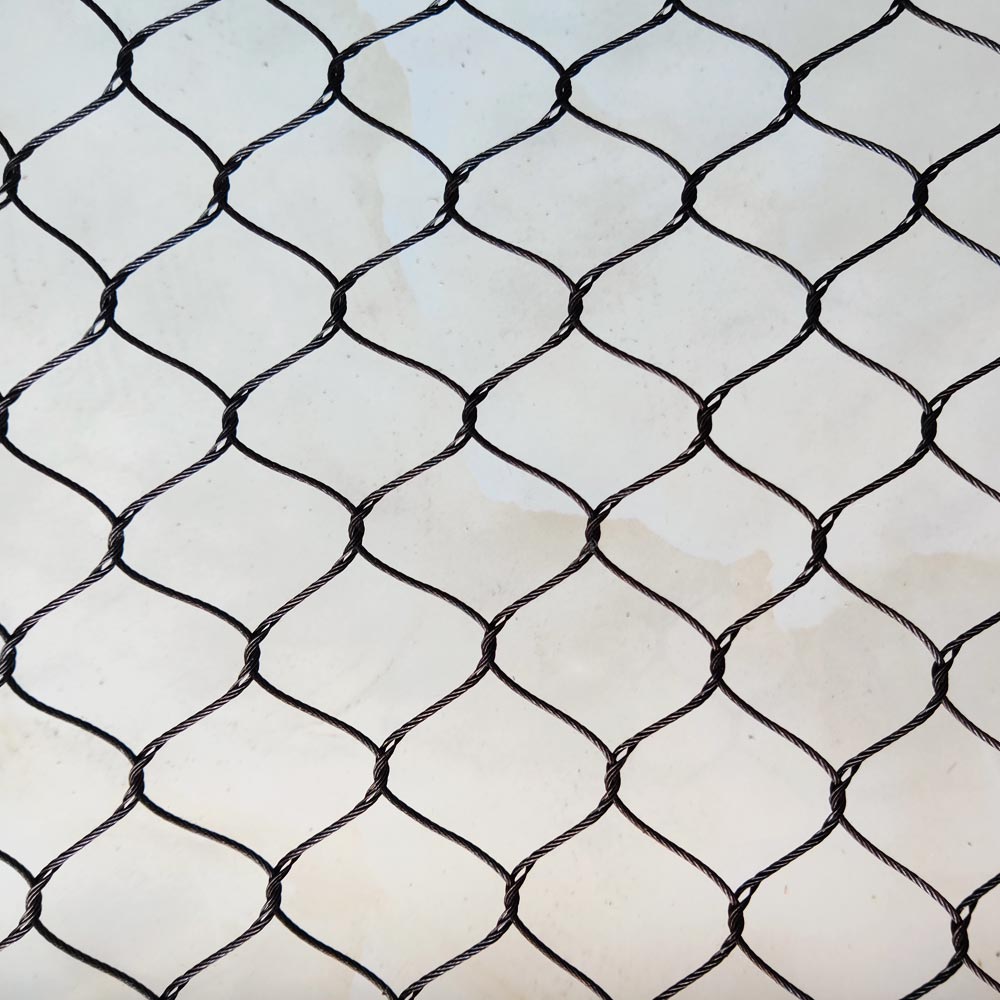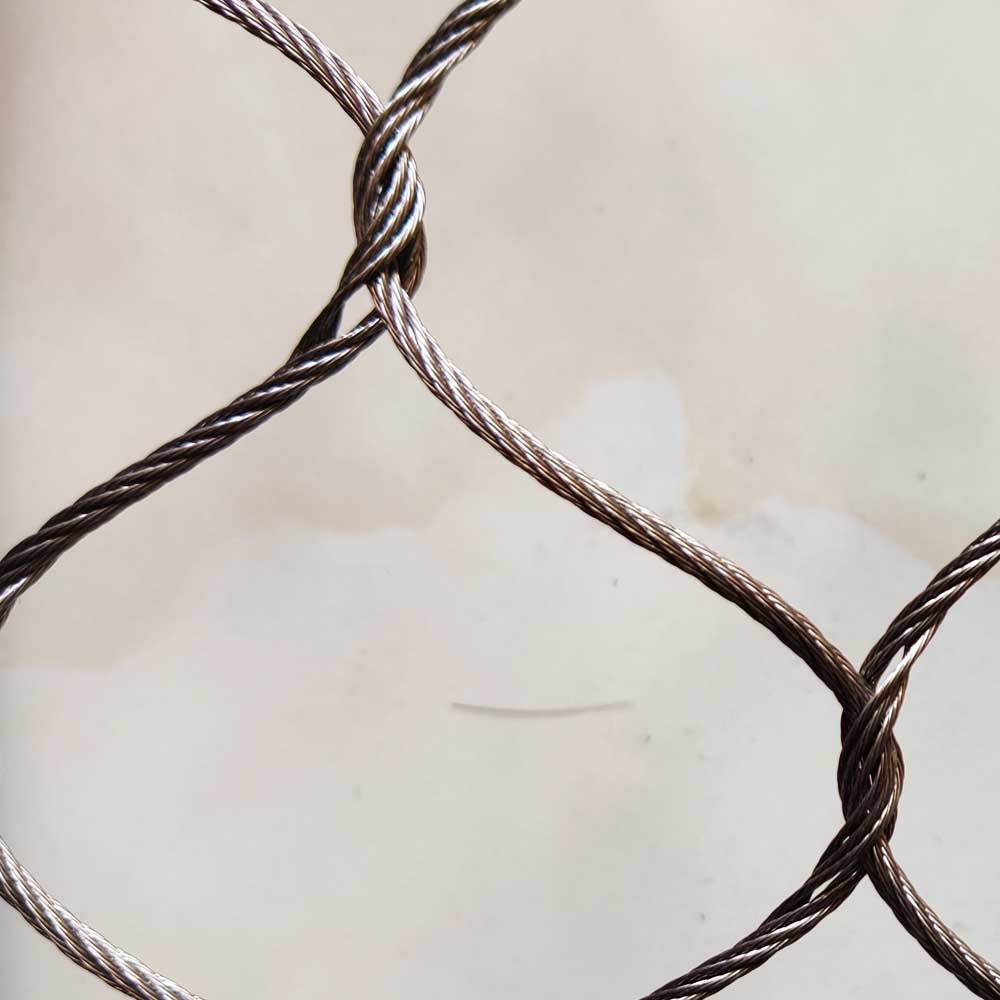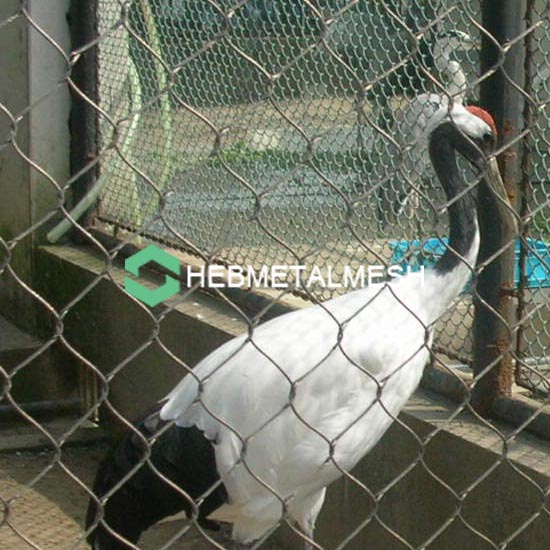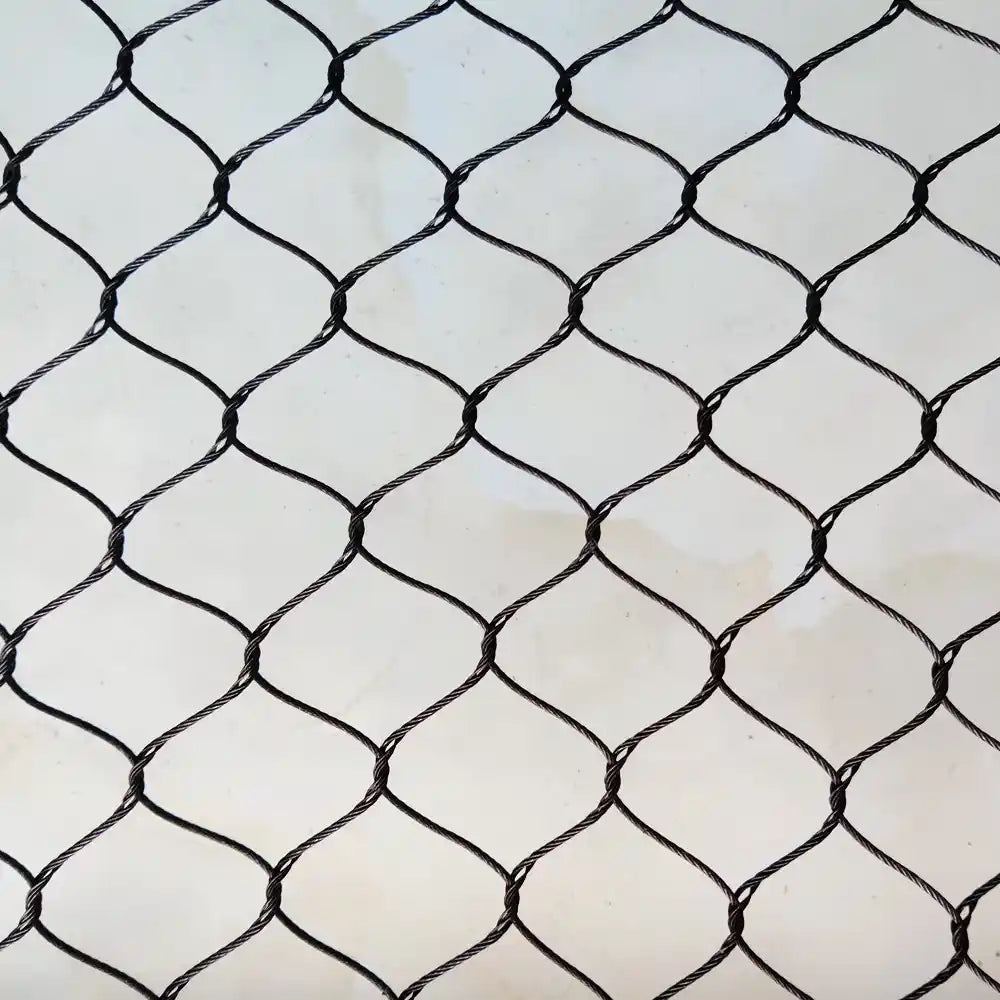- 10' x 60' roll SS304 - Many in stock-5%$1,300.00$1,380.00
-
Customized Please Contact Us -
Many in stock
$10.00
2" x 2" netting for outdoor aviary, bird netting and outdoor enclosure 10' x 60' roll
Share
Guaranteed Safe Checkout
Supply outdoor aviary netting, available in a wide range of sizes that can be customized, from 1" to 4" mesh.
Material: Stainless Steel 304
Diameter of wire cable: 5/64"
Mesh Size: 2" x 2"
Roll size: 10' x 60'
Color: Metal
Protecting Your Birds with Aviary Netting
Aviary netting is a crucial component in bird conservation and care. It serves as a protective barrier, safeguarding your birds from potential threats.
Choosing the right netting for your outdoor aviary or enclosure can be a complex task. It requires careful consideration of factors such as durability, mesh size, and material safety.
In this guide, we delve into the intricacies of aviary netting. We'll explore how to select, install, and maintain it effectively, ensuring the safety and well-being of your birds.
The Importance of Aviary Netting
Aviary netting serves a dual purpose. It not only prevents captive birds from escaping but also protects them from predators.
Moreover, it acts as a barrier against wild birds. This is crucial as interactions with wild birds can lead to the spread of diseases. Thus, aviary netting plays a vital role in maintaining the health and safety of your birds.
Selecting the Right Netting Material
Choosing the right material for your aviary netting is crucial. The material should be non-toxic and safe for birds, ensuring their well-being.
Moreover, the netting should be durable enough to resist wear and tear from weather conditions and the birds themselves. This ensures the longevity of your aviary.
UV-Resistance and Durability
Outdoor aviary netting should be UV-resistant. This feature allows it to withstand prolonged exposure to sunlight without losing its strength or integrity.
Durability is another key factor. The netting should be robust enough to endure the elements and the activities of the birds housed within.
Mesh Size Considerations
The size of the mesh in your aviary netting is another important consideration. It should be small enough to prevent birds from escaping, yet large enough to allow for visibility and airflow.
This balance ensures that your birds are safe and comfortable, while also allowing you to observe them easily.
Installation Best Practices
Installing aviary netting requires careful attention to detail. It's crucial to ensure there are no gaps or loose areas that could pose a risk to the birds.
Proper tensioning of the netting is key. This prevents sagging and potential hazards that could harm the birds or allow them to escape.
The netting should also be securely anchored to the ground. This prevents animals from burrowing underneath and entering the aviary.
Ensuring Proper Tension and Security
The tension of the netting is a critical aspect of installation. It should be tight enough to prevent sagging, but not so tight that it risks tearing or breaking.
Securing the netting to the ground is also important. This prevents potential predators from burrowing underneath and gaining access to the aviary.
Height and Free Flight Space
The height of the netting is another important consideration. It should be installed at a sufficient height to allow birds to fly freely within the enclosure.
This not only allows for natural bird behavior but also contributes to the overall health and well-being of the birds.
Maintenance and Regular Checks
Regular maintenance checks are necessary for aviary netting. This ensures the integrity of the netting over time and helps identify any potential issues early.
During these checks, look for signs of wear and tear. This could include fraying, holes, or loose areas that need to be addressed.
Also, check for signs of external damage. Fallen branches, debris, or signs of attempted predator intrusion should be noted and addressed promptly.
Protecting Against Predators and Weather
Aviary netting serves as a barrier against predators. It's crucial to consider local wildlife when choosing netting to ensure it can withstand potential threats.
The netting also provides protection against harsh weather conditions. It should be weather-resistant to endure elements like rain, snow, and wind.
In addition, the netting should be anchored securely to the ground. This prevents animals from burrowing underneath and gaining access to the aviary.
Conclusion and Call to Action
Aviary netting is a vital component in bird protection. It ensures their safety from predators, weather, and other potential hazards.
Invest in quality netting and prioritize regular maintenance. Your birds' safety and well-being depend on it.
You may also like
I've been searching for a reliable netting solution to protect my chickens from predators, and this product exceeded my expectations. It's easy to install, incredibly strong, and has already proven to be an effective deterrent to foxes and raccoons. The 10' x 60' roll provided ample coverage for my chicken run, and I feel confident that my flock is safe and secure. A must-have for any poultry owner!
I was impressed with the strength and durability of this netting. It's clearly designed to withstand harsh outdoor conditions. The 2" x 2" mesh size is perfect for keeping my birds secure while allowing for good airflow. I also appreciate the generous roll size, as it allowed me to create a large enclosure without needing multiple pieces. Highly recommend!
This 2" x 2" netting is exactly what I needed to create a safe and spacious outdoor aviary for my beloved birds. The quality is exceptional - strong, durable, and seemingly impenetrable to even the most determined escape artist. The 10' x 60' roll provided ample coverage for my yard. Installation was straightforward, and I'm confident this netting will withstand the elements for years to come. My birds are thriving in their new home, and I couldn't be happier with this product!







